#lichenology
Text



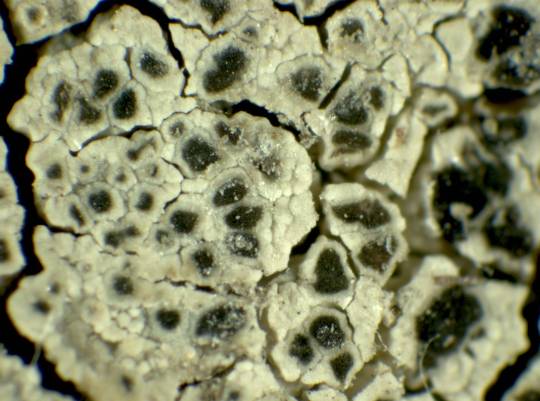






Lecanora intricata
Lichens have a few different ways to reproduce (they're just awesome like that) but most lichen symbioses include an ascomycete fungi, AKA a sac fungi. These fungi create spores in internal sacs known as asci (singular: ascus), and lichenized ascomycetes often house these sacs in their apothecia, or fruiting bodies. So you see those dark spots on the surface of our pal L. intricata here? Those are its apothecia, or its fruiting bodies, from which fungal spores will be ejected to go out and hopefully form their own little lichens someday. Pretty neat, huh? L. intricata is a crustose lichen with a verrucose (wart-like)-areolate (tile-like) thallus. It has a gray-green to yellow-green surface sitting atop a dark prothallus (a layer of fungal hyphae). It should look something like puzzle-pieces on a dark surface. It has blackish-green to brown, irregularly shaped apothecia immersed in the thallus surface. L. intricata grows on silicious rock and occasionally wood in montane, boreal, and arctic habitats.
images: source | source | source | source
info: source | source | source
#lichen#lichens#lichenology#lichenologist#mycology#ecology#biology#fungi#fungus#nature#symbiosis#symbiotic organisms#algae#the natural world#life science#environmental science#natural science#trypo#trypophobia#Lecanora intricata#Lecanora#I'm lichen it#lichen a day#daily lichen post
45 notes
·
View notes
Text


Lichen doodles from my sketchbook ✏️💚
#lichen#lichens#lichenology#mycology#fungi#algae#botany#ink sketch#ink drawing#doodles#doodling#doodle#sketchbook#sketches#art journal
1K notes
·
View notes
Text

Tubifera ferruginosa fruiting around a Cladonia sp. lichen by John MacKay
#tubifera ferruginosa#tubifera#myxomycota#slime mold#slime mould#lichen#cladonia#lichenology#mycology#myxomycology#nature photography#forest floor#forest photography#macro photography#clusters#trypophobia
705 notes
·
View notes
Text
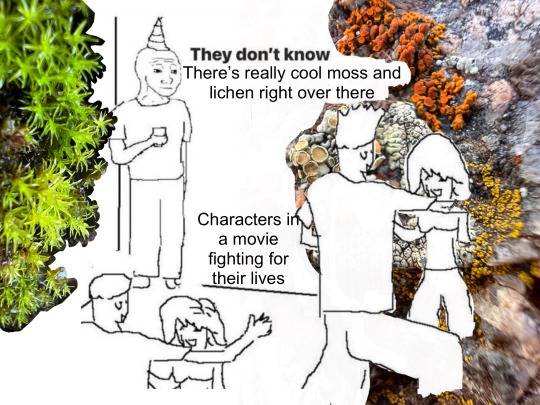
I made my family pause Jurassic park bc there were cool lichens
#moss#mosscore#botany#bryology#lichenology#bryophyta#bryophytes#lichen#lichen memes#botany meme#botany shitposts#biology meme#botany memes#moss memes
911 notes
·
View notes
Text

Some thicc devil's matchstick lichen.
#artists on tumblr#original photographers#original photography#hiking#pacific northwest#nature#nikon#washington#pnw#orofeaiel#devil's matchstick#lichen#forest finds#small worlds#goblincore#lichenology#Cladoniaceae#macro photography
90 notes
·
View notes
Photo


Oakmoss lichen Evernia prunastri & Physcia leptalea
#cottagecore#dirtcore#goblincore#nature#nature photography#biology#ecology#wildlife#wildlife photography#macro photography#lichen#lichens#lichenology
829 notes
·
View notes
Text
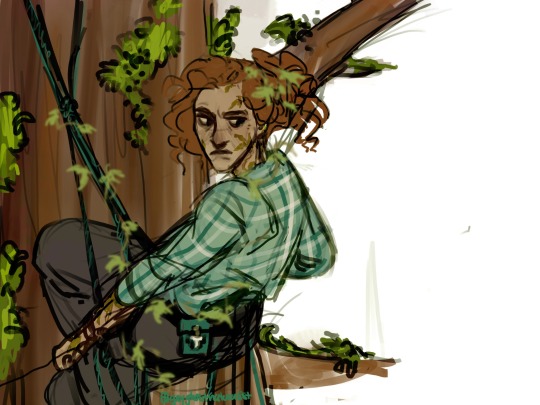

Quick sketch of Pamela in a tree and Letharia columbiana on a ponderosa pine 😤🙌 It’d be cool to get to climb a tree like this for lichens, the ones I study are on small boulders. Letharia are this bright yellow-green color because of vulpinic acid, which we think the lichen makes to use as a sunblock. See if you can spot them in your area! You might see them spot you back, their common name is “brown-eye wolf lichen”. The “eyes” are the apothecia, they spread the spores of the fungi. You can think of apothecia basically as mushroom cap turned upside down like a bowl.
#poison ivy but she’s an actual botanist#pamela isley#dr pamela isley#botany#lichenology#Letharia#wolf lichens#lichens#poison ivy fanart#poison ivy art#poison ivy design#artists on tumblr
305 notes
·
View notes
Text
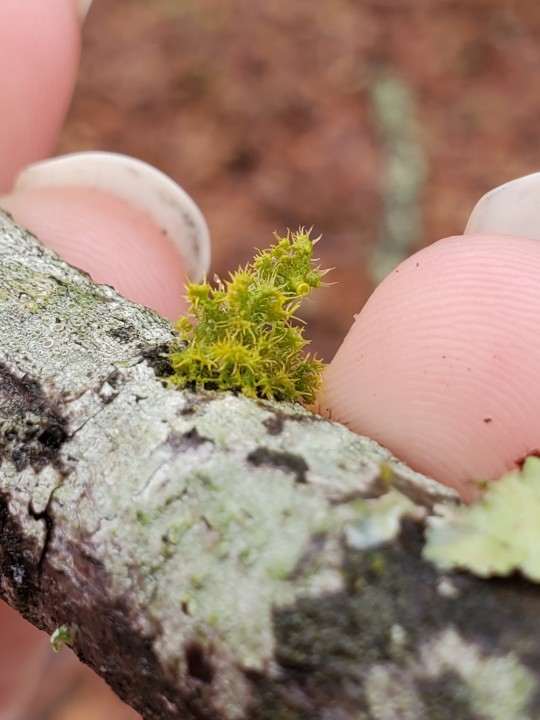




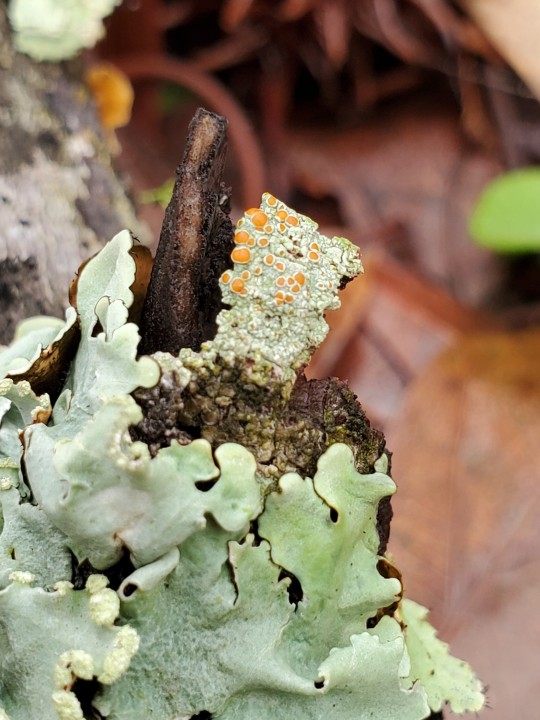
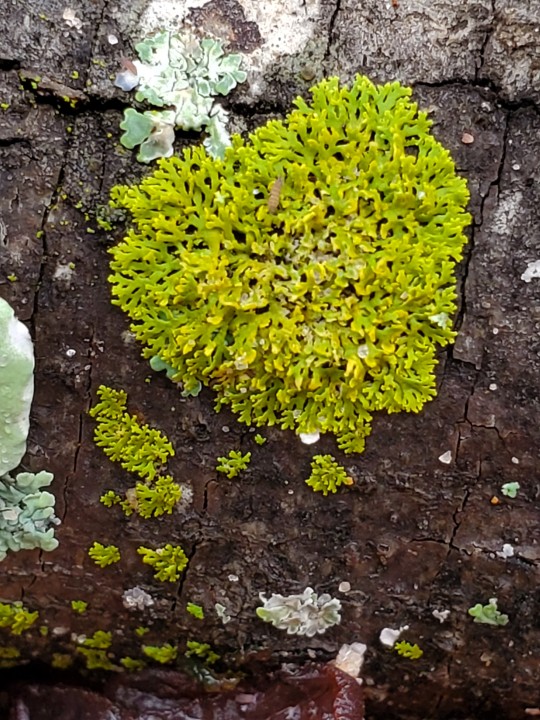

Little Lichens!!
A selection of the very smallest lichens I found in the park today. Featuring:
Golden-eye lichen 》 Teloschistes chrysophthalmus in images 1-4
Bloodstain lichen 》 Haematomma genus in images 5 & 6
Candleflame lichen 》 Candelaria concolor in images 7 & 8
Well, this my first post in a few weeks. Spring semester started and has me doing a lot of work and today I begin packing for a move. I am quite overwhelmed at the moment and can't make any promises as far as posting consistently or at all until things slow down for me, but we'll see how it goes. Enjoy these bonus pictures of the pond in the meantime. Mush love to all. 🍄��


Southeast Texas, 26 Jan. 2024
#amatuer mycology#mushroom hunting#mushrooms#mycology#fungi#mushrooms of texas#texas mushrooms#wild fungi#fungi of texas#fungarium#foraging#pond#green algae#lichen#little lichens#lichenology#goldeneye lichen#bloodstain lichen#candleflame lichen#lichen of texas#lichen identification#lichen species#species identification#special interest
26 notes
·
View notes
Text

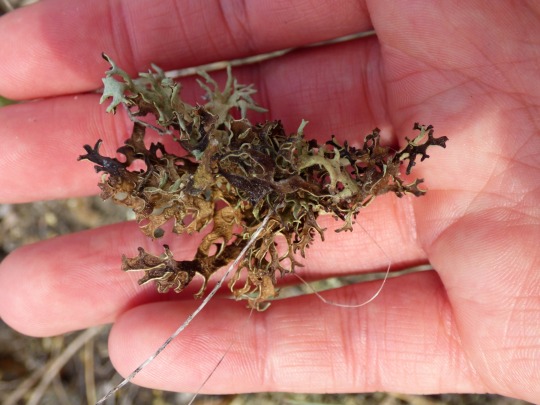
Hark! a vagrant!
64 notes
·
View notes
Text
When I lead guided nature tours, I often have people asking me if the lichens we see are harming the trees they grow on. So I decided to make a little video about it!
(Follow my shiny new TikTok at https://www.tiktok.com/@rebeccathenaturalist/)
61 notes
·
View notes
Text
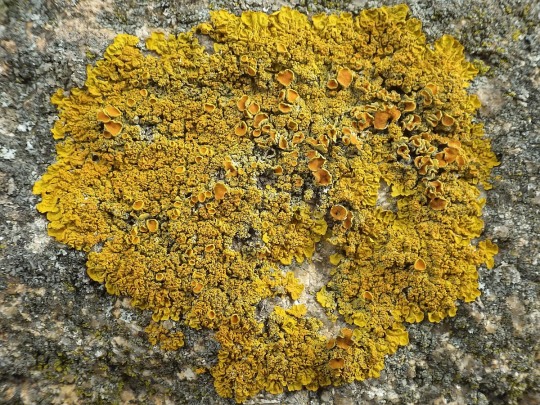

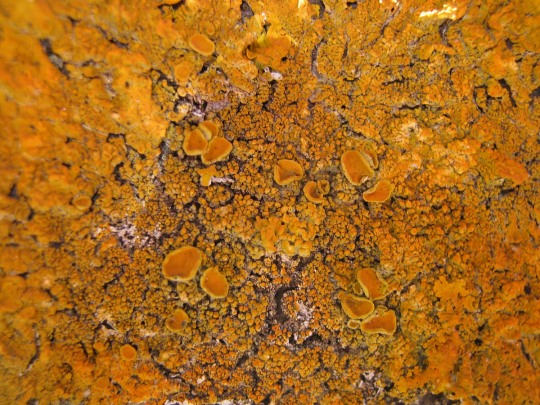
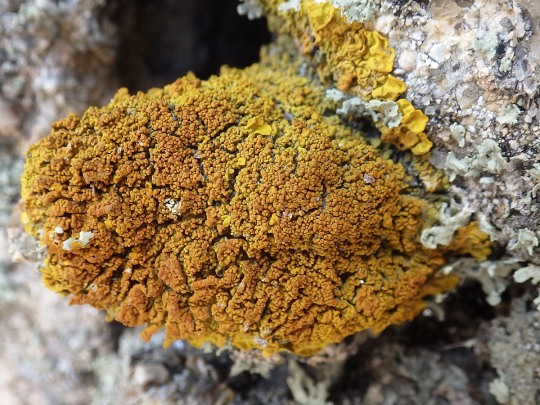

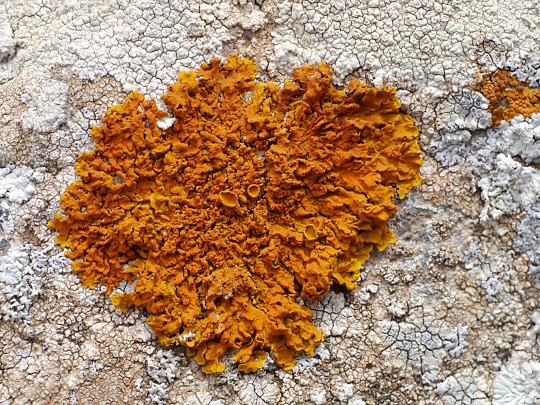



Xanthoria calcicola
This foliose lichen grows on calcareous rock and stone work (and occasionally dusty trees) in eutrophic, well-lit, mild-temperate and costal regions of Europe and the Mediterranean. It has a yellow-orange to dark orange foliose thallus forming pleated lobes growing in large rosettes up to 20 cm in diameter. The center of the rosettes are covered in knobbly warts and granular isidia, and it only rarely produces apothecia. The presence of these isidia and the lack of apothecia is the best way to distinguish this lichen from the very similar looking X. parietina which is a lot more common and often grows on bark.
images: source | source
info: source | source | source
#lichen#lichens#lichenology#lichenologist#mycology#ecology#biology#fungi#fungus#symbiosis#symbiotic organisms#algae#Xanthoria calcicola#Xanthoria#trypo#trypophobia#life science#environmental science#natural science#nature#the natural world#beautiful nature#weird nature#naturalist#I'm lichen it#lichen a day#daily lichen post#lichen subscribe#orange#orange lichen
222 notes
·
View notes
Text
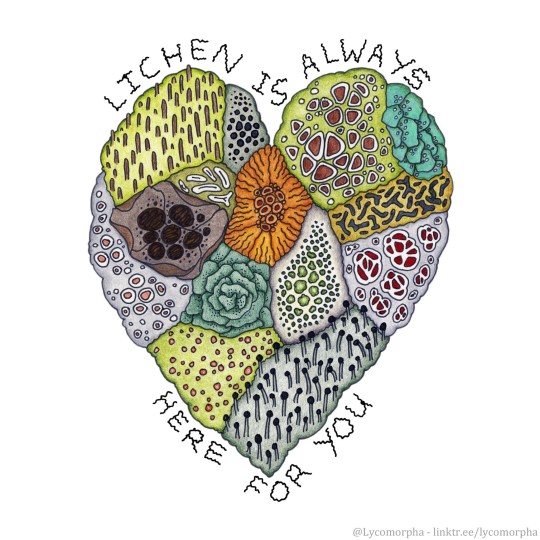
Smol reminder 💚🌿
I'm recovering from some medical treatment right now and I'm the worst patient at stopping and resting. So this is as much as note to self, to slow down and look at the lichens 😊
#lichen#lichens#lichenology#mycology#fungi#fungus#algae#symbiosis#drawing#colour pencil drawing#color pencil
742 notes
·
View notes
Text



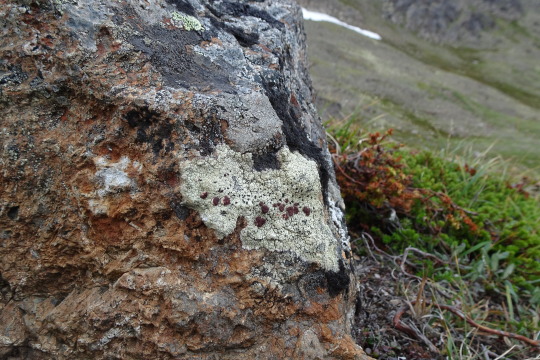
Alaska has a plethora of lichens, and many are quite hard to tell apart. However, the alpine bloodspot lichen, Ophioparma ventosa, is pretty easy to identify - the combination of bright red apothecia (a type of reproductive structure) on a pale yellow base is unmistakable. This species used to be known as Haematomma ventosum, which in my opinion is easier to remember. However, in North America, members of Haematomma are restricted to the Southern US and Mexico. The only other species in the genus Ophioparma isn't found so far north, either! Although pretty hard to harvest (they're only found on rocks in arctic and alpine tundras), the bright red apothecia from these lichens have been used to produce reddish-purple and magenta dyes.
#lichens of alaska#ophioparma ventosa#bloodspot lichen#alpine bloodspot lichen#lichenology#ethnobotany#botany#ethnolichenology#if that's a thing
194 notes
·
View notes
Text
Discovering Citizen Science
I have mentioned in previous blog posts that one of the best decisions I have made in the last 5 years was to get involved in my local mycological society. Foray NL is a not for profit collaborative group that involves folks from a variety of backgrounds including mycologists, lichenologists, indigenous partners, students and citizen scientists. All of these people get together once a year to collect, analyze, identify, photograph, and catalogue mushroom and lichen species from across Newfoundland. Each year new species are discovered, species that have never been collected before or in some cases never been identified before. There are so many different kinds of mushrooms and lichens. Lichen identification by Foray NL has helped to play a part in conservation efforts here in Newfoundland. It makes me feel like we are making a small but meaningful difference in the world. It is truly fascinating that despite the tens of thousands of specimens collected over the 20 years Foray NL has been active, we still have only grazed the surface of biological variety. This element of discovery really ignited a curiosity in me that has led to a new career path, and has helped me discover a joy in continued studies as an adult (such as this course!)
Citizen science is about asking questions and observing. Check out this mushroom house party! What kind of music do you think they are listening to?
In 2019 when I attended my first Foray NL three day event. I was initially a bit nervous, but interested in learning more about mushrooms as an amateur forager. It fascinated me to discover that there are edible food sources wherever we go. Knowing what to eat was just a matter of researching a bit more about plant and fungi biology. As a forager I wanted to know what else I could eat aside from the wild berries, Labrador tea, and plethora of edible backyard weeds. I wanted to dive head first into the woods and talk to the people that knew about wild food sources, and how not to die while eating mushrooms. What I didn’t expect was a welcoming, interesting community of people who were maybe a bit eccentric, but incredibly knowledgeable, funny, caring and ready to take on the world on mushroom at a time. I don’t remember what I was expecting, but when I stepped into the “mush-room” I was blown away. The “mush-room” is a large makeshift laboratory where all the species of mushrooms that have been collected over the weekend are laid out for identification on tables. There were piles of books for identification, a photography booth, microscopes, dehydrators and tables and tables of unique fungi and lichens. The variety was astounding to someone who really only knew about wild chanterelles. I went past each specimen taking in their names, features and examining their qualities. I observed their spores on microscope slides, witnessed bio-luminescence in the photo room, and along the way learned so much from each person I spoke with. It was fun, and I helped to contribute to the collection, my role even had a name - citizen scientist. This slow building of knowledge has been incredibly rewarding and the yearly event is something I continue to look forward to. My hope is that by sharing my story other folks will reach out to similar organizations and seek out the knowledge that lingers there. You too can be a citizen scientist!
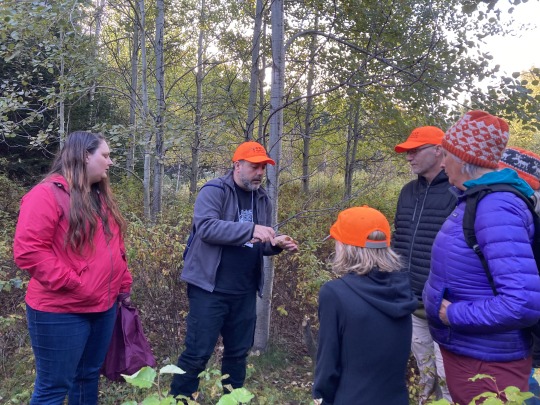
Folks at Foray NL learning about how to identify mushrooms.
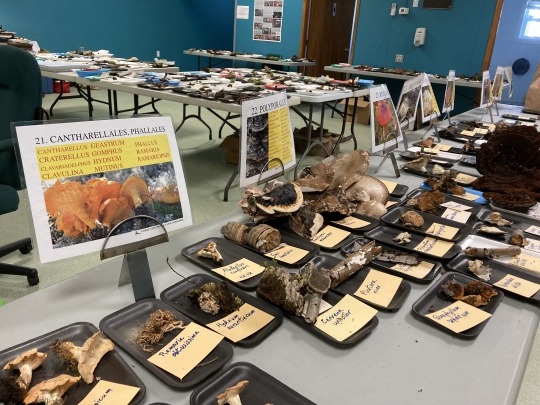
The "Mush-Room" identification tables at Foray NL

One specimen of identified mushrooms on the table.
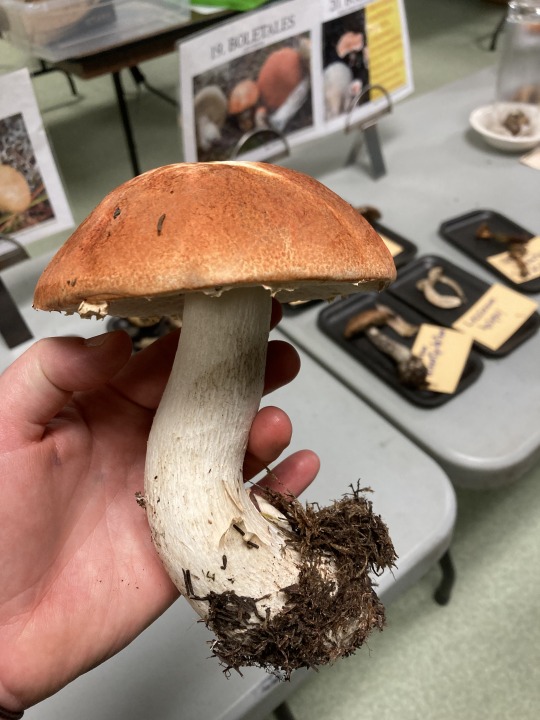
A bolete! From the tables, 2023.

Science! Is for everyone!
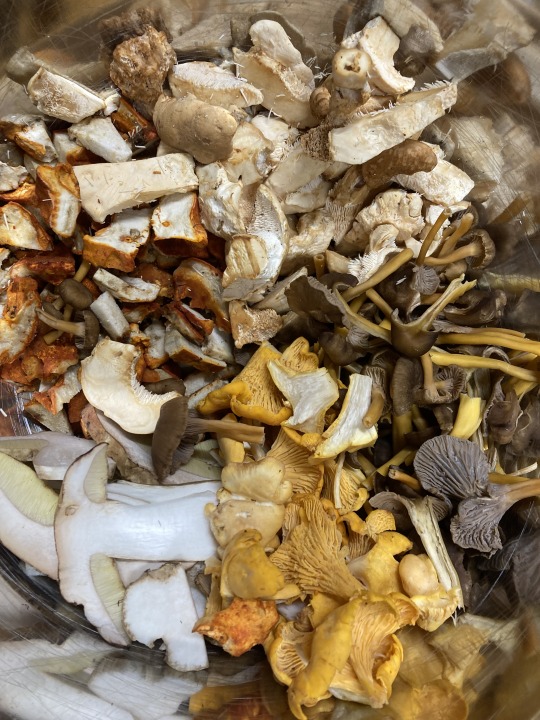
My favourite part, prepping and eating a foraged fungi feast for everyone at Foray NL to enjoy after a day in the woods collecting specimens.
8 notes
·
View notes
Text

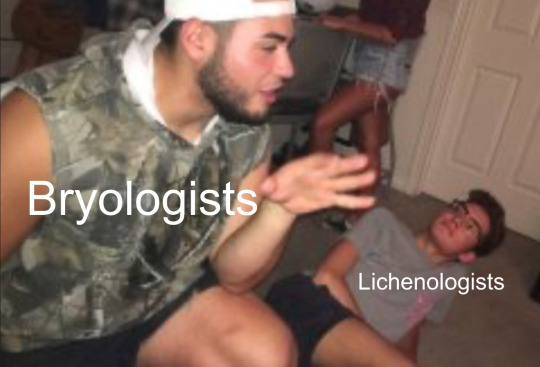
We are best friends. We have a joint society, the American Bryological and Lichenological Society (ABLS), aka Understudied Botany Bros Society since 1898 🤝 .
Please use these as signs of appreciation on the posts of your Bryologist/Lichenologist friends (or if you are particularly interested in one or the other. Hobbyists my beloved)
#bryology#lichenology#botany#botany memes#lichen memes#moss memes#mosscore#science#bryophyta#bryophytes#botany facts
24 notes
·
View notes
Text
I took a few pictures of some really cool lichens today! I used my magnifying loop.
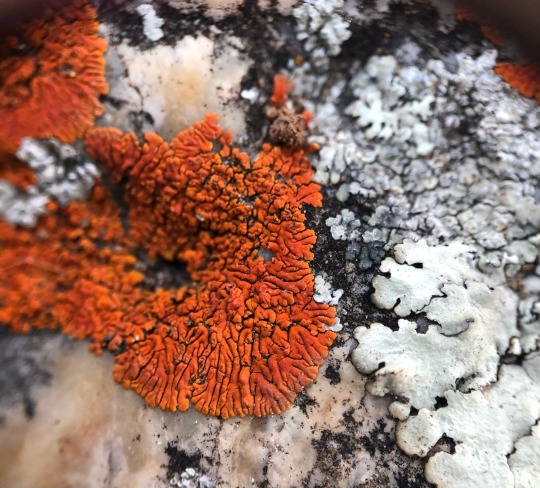

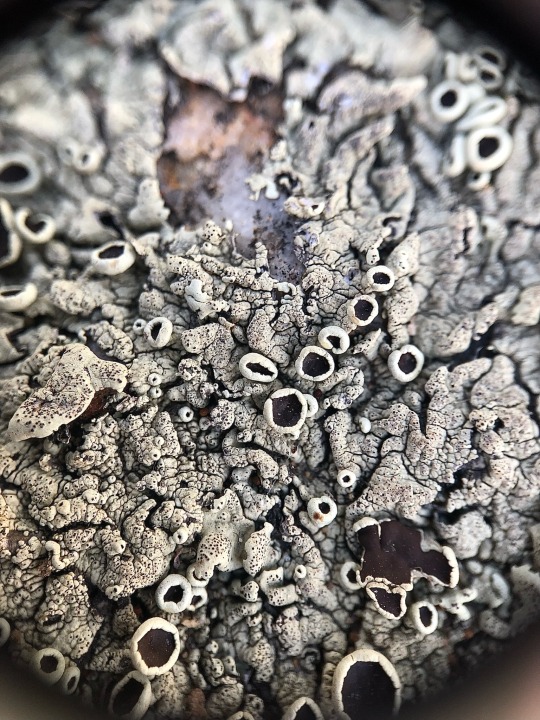




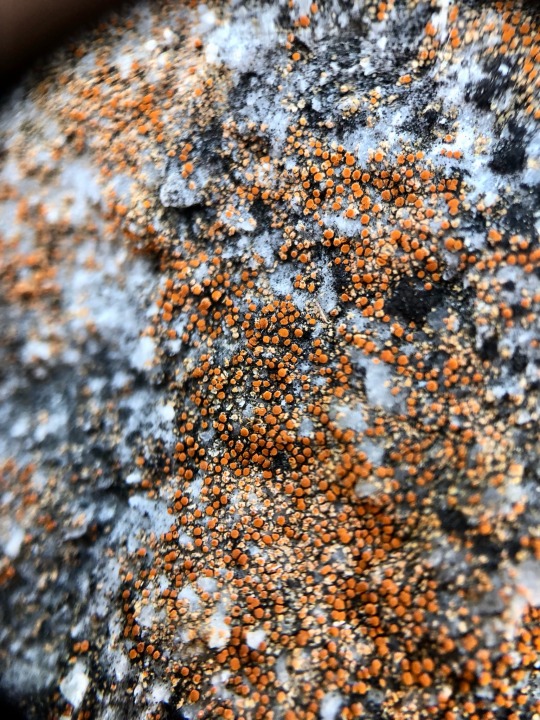

55 notes
·
View notes